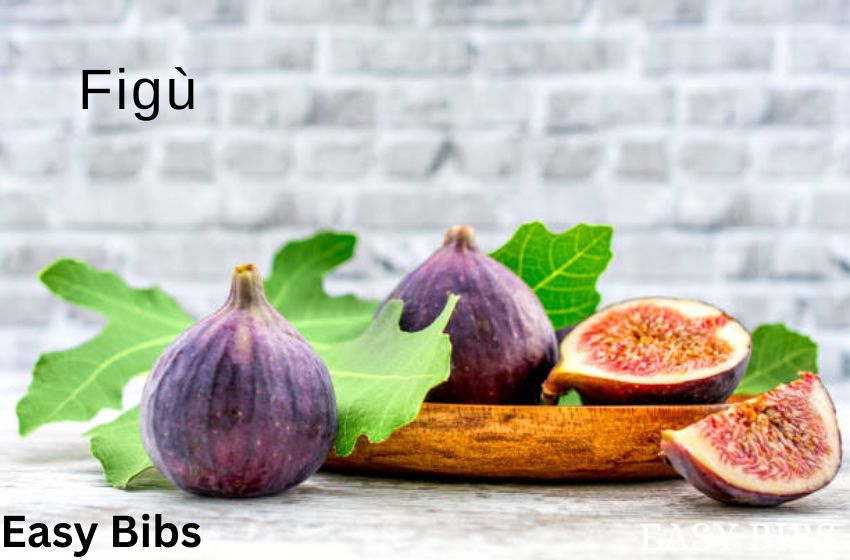Figù, commonly known as figs, are a type of fruit that has been cherished for centuries for their sweet taste and numerous health benefits. This article delves into the culinary significance, nutritional value, and diverse applications of figù in various cuisines around the world.
Etymology and Origins of Figù
The term “figù” derives from the word “fig,” which has its origins in the Latin word “ficus.” Figs are one of the oldest cultivated fruits, with evidence of their cultivation dating back to ancient civilizations such as Egypt and Greece. They have been a staple in the Mediterranean diet for thousands of years, celebrated for their sweetness and versatility.
Culinary Significance of Figù
Figs hold a special place in many culinary traditions, both as a fresh fruit and in dried form. They are used in a variety of dishes, ranging from appetizers and salads to main courses and desserts.
Fresh Figs
Fresh figù are prized for their juicy texture and rich flavor. They can be eaten on their own or added to salads, cheese platters, and desserts. The soft, edible skin and the sweet, seedy interior make them a delightful addition to various recipes.
Dried Figs
Dried figù are a popular snack and ingredient in many dishes. The drying process concentrates their sweetness, making them a perfect natural sweetener for baked goods, cereals, and energy bars. Dried figs are also a common component in traditional holiday dishes and confections.
Nutritional Benefits of Figù
Figs are not only delicious but also packed with essential nutrients. They are a rich source of dietary fiber, vitamins, and minerals, contributing to various health benefits.
Rich in Fiber
Figs are an excellent source of dietary fiber, which aids in digestion and helps maintain a healthy gut. Consuming figs can help prevent constipation and promote regular bowel movements.
High in Vitamins and Minerals
Figù are loaded with vitamins such as vitamin A, vitamin K, and several B vitamins. They also contain essential minerals like potassium, magnesium, and calcium, which are crucial for maintaining bone health and proper muscle function.
Antioxidant Properties
Figs are rich in antioxidants, which help combat oxidative stress and reduce the risk of chronic diseases. The antioxidants found in figs, such as phenolic compounds, contribute to their health-promoting properties.
Figù in Global Cuisines
Figs are a versatile fruit used in many global cuisines. Their unique flavor and texture make them a favorite ingredient in various culinary traditions.
Mediterranean Cuisine
In Mediterranean cuisine, figs are often paired with savory ingredients like goat cheese, prosciutto, and nuts. They are used in salads, appetizers, and desserts, adding a touch of sweetness and complexity to dishes.
Middle Eastern Cuisine
Figs play a significant role in Middle Eastern cuisine, where they are used in both sweet and savory dishes. They are a key ingredient in traditional desserts like fig jam, fig cakes, and fig-stuffed pastries.
Western Cuisine
In Western cuisine, figs are commonly used in baking and cooking. They are a popular addition to bread, cakes, and muffins. Fig preserves and fig compote are also beloved accompaniments to cheese and charcuterie boards.
Figù in Modern Diets
With the rise of health-conscious eating, figs have gained popularity as a nutritious and versatile ingredient. They are incorporated into various modern diets, including plant-based and gluten-free diets.
Plant-Based Diets
For those following a plant-based diet, figs offer a natural source of sweetness and nutrition. They can be used to create vegan desserts, smoothies, and energy bars, providing a healthy alternative to refined sugars.
Gluten-Free Diets
Figs are naturally gluten-free, making them an excellent choice for those with gluten sensitivities or celiac disease. They can be used in gluten-free baking and cooking, adding flavor and texture to dishes.
Conclusion
Figù, with their rich history and nutritional benefits, continue to be a beloved fruit in many cultures. From their origins in ancient civilizations to their modern-day applications in diverse cuisines, figs have proven to be both delicious and versatile. Whether enjoyed fresh, dried, or as part of a dish, figs offer a delightful and healthy addition to any diet.
For more insights into the culinary uses and nutritional benefits of figs, visit Easy Bibs, where we explore various foods and their significance in our daily lives. Join us at Easy Bibs to learn more about how figs can enhance your culinary experiences and contribute to a healthy lifestyle.


